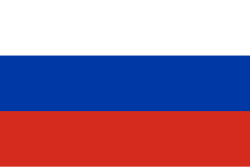|
Russia national speedway team
The Russia national speedway team are one of the major international motorcycle speedway nations. HistoryAs the Soviet UnionThe Soviet Union speedway team (which was composed predominantly of Russian riders but also Ukrainian, Latvian and Belarus riders) first competed in the 1961 edition of the Speedway World Team Cup, where they finished second in the East European round.[1] Throughout the history of World Team Cup, the team were regular World Cup contenders from 1961 until their final World Cup in 1983.[2] They reached the final on 12 occasions, winning the silver medal five times, in 1964, 1966, 1971, 1972, 1975 and the bronze medals three times, in 1967, 1969 and 1973.[3][4] As RussiaFollowing the Dissolution of the Soviet Union at the end of 1991, the riders then competed for their new speedway nations of Russia, Ukraine and Russia. The Russian national team first competed in the World Team Cup at the 1993 Speedway World Team Cup, finishing 1st in Group D (the fourth tier of the World Cup).[5] They quickly established themselves as a major contender and reached the World Cup final in 1996 and winning the silver medal. The team experienced a disappointing period from 1997 and although they regularly finished inside the top ten, it was not until 2009 that they reached a final, competing in the 2009 Speedway World Cup final. They then won bronze medala at the 2012 Speedway World Cup and the 2017 Speedway World Cup. The Speedway of Nations was introduced in 2018 and Russia dominated the first three years of the event, becoming the world champions from 2018 to 2020. However, their run came to an end due to the 2022 Russian invasion of Ukraine. On 6 March 2022, the Fédération Internationale de Motocyclisme banned all Russian motorcycle riders, teams, officials, and competitions.[6] Major world medalsWorld Team Cup/World Cup/Speedway of Nations
International capsSince the advent of the Speedway Grand Prix era, international caps earned by riders is largely restricted to international competitions, whereas previously test matches between two teams were a regular occurrence.[7] References
|
|||||||||||||||||||||||||||||||||||||||||||||||||||||||||||||||||||
